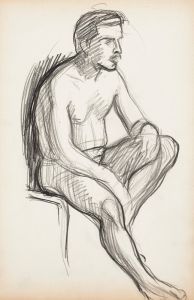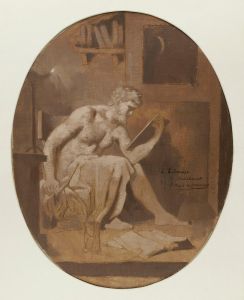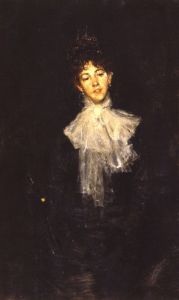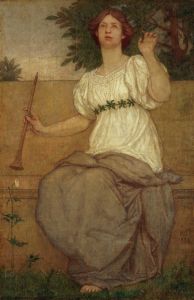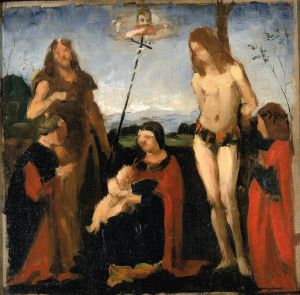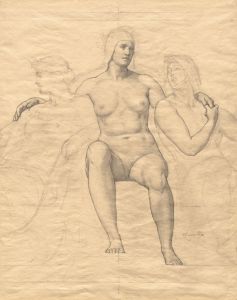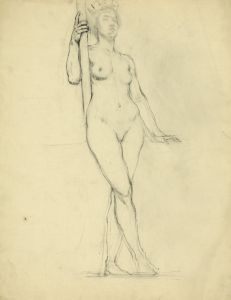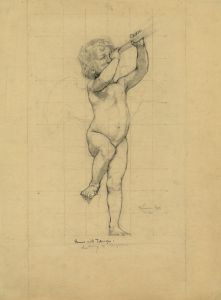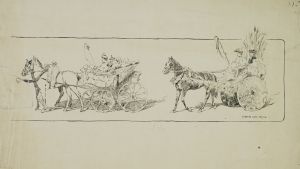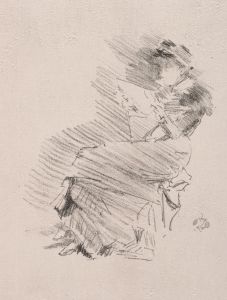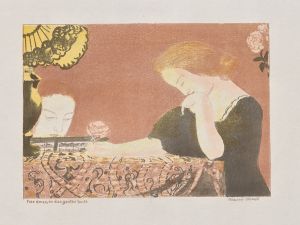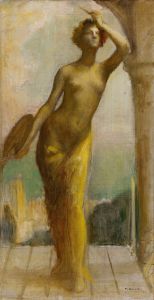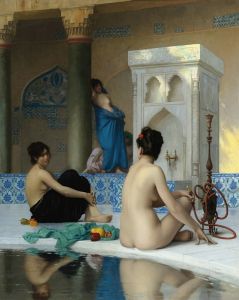
A hand-painted replica of Kenyon Cox’s masterpiece , meticulously crafted by professional artists to capture the true essence of the original. Each piece is created with museum-quality canvas and rare mineral pigments, carefully painted by experienced artists with delicate brushstrokes and rich, layered colors to perfectly recreate the texture of the original artwork. Unlike machine-printed reproductions, this hand-painted version brings the painting to life, infused with the artist’s emotions and skill in every stroke. Whether for personal collection or home decoration, it instantly elevates the artistic atmosphere of any space.
Kenyon Cox (1856–1919) was an American painter, illustrator, muralist, writer, and teacher, known for his classical style and his contributions to the American Renaissance movement. While Cox created numerous works throughout his career, there is no specific painting titled "by Kenyon Cox" that is widely recognized or documented in art historical records. Therefore, it is not possible to provide a detailed introduction to a painting by that name.
However, Kenyon Cox's body of work is significant and includes a variety of paintings and murals that reflect his classical training and his commitment to the ideals of beauty and order. Cox was born in Warren, Ohio, and studied at the Pennsylvania Academy of the Fine Arts before moving to Paris to continue his education at the École des Beaux-Arts. Under the tutelage of renowned artists like Jean-Léon Gérôme, Cox honed his skills in the academic style, which emphasized precise drawing and a polished finish.
Upon returning to the United States, Cox became an influential figure in the American art scene. He was a prominent advocate for the classical tradition in art, often writing and lecturing on the subject. His works frequently featured allegorical and mythological themes, rendered with a meticulous attention to detail and a harmonious composition.
Cox's murals are among his most celebrated contributions to American art. He was commissioned to create murals for several important public buildings, including the Library of Congress in Washington, D.C., and the Wisconsin State Capitol. These works often depicted historical or allegorical subjects, designed to inspire and educate the public.
In addition to his work as a painter and muralist, Cox was a prolific writer and critic. He contributed essays and reviews to various publications, articulating his belief in the importance of beauty and craftsmanship in art. His writings often addressed the tension between traditional and modernist approaches, advocating for a balance that respected the past while embracing contemporary innovation.
Cox also taught at the Art Students League of New York, where he influenced a generation of artists with his emphasis on drawing and composition. His teaching and writings helped to shape the discourse around art in the late 19th and early 20th centuries, reinforcing the value of classical principles in a rapidly changing world.
Overall, Kenyon Cox's legacy is marked by his dedication to the classical ideals of beauty, order, and harmony. His work as an artist, writer, and teacher contributed significantly to the American Renaissance movement, leaving an enduring impact on the cultural landscape of his time. While there is no specific painting titled "by Kenyon Cox" to describe, his overall contributions to art and his influence on American culture remain noteworthy.





